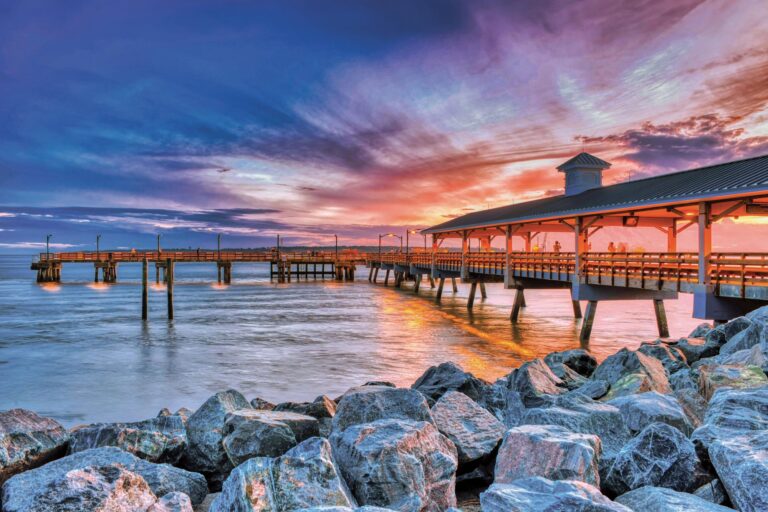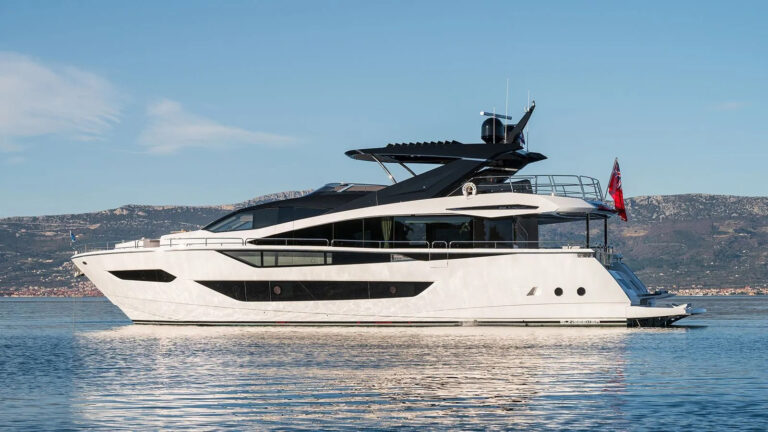Remember the green or orange phosphor radar displays boaters took on the water before digital raster-scan displays became available? Those old analog CRTs were dim at best, and we had to bury our faces in a smelly, occasionally sticky, light-excluding rubber hood to see the faintest bit of anything. If the day was bright, we had to wait an eternity for our eyes to adapt to the darkness inside the black hole.
Today, thankfully, the wheelhouses of large yachts have low ambient light levels and easy-to-read, large-screen CRT and liquid crystal displays. Aboard mid-size motoryachts, however, such screens are often exposed to average daylight and direct sunlight, making them nearly unreadable. In direct sunlight, for the helmsman to see much of anything, the level of brightness and contrast must be four to 10 times that normally achieved by a typical screen.
Researchers working to keep those rubber hoods obsolete have relied on backlighting technology, but recently, more and more manufacturers are turning to transflective technology to make screens easier to read. Some even use a combination of the two technologies to provide optimum viewing. What type of screen is best for your yacht? Understanding how each works may help you answer that question.
BACKLIGHTING TECHNOLOGY
Unlike CRTs, which emit light from electron-excited phosphors, liquid crystal displays function by controlling the amount of light that passes through them. Each pixel in an LCD operates as a shutter, allowing or blocking the passage of light from an external source.
Monochrome LCDs, such as those used in GPS units, reflect incident light during the day and need internal illumination only at night. Their use of reflected incident light makes them easy to see in bright sunlight.
On the other hand, most of today’s color LCDs must be illuminated from the rear and can be difficult or impossible to see in daylight. An electroluminescent panel usually provides rear illumination for color LCDs, such as those used in laptop and desktop computers. This light source is thin, flat, cool running, moderately bright and electrically efficient. (The small flat, blue or green glowing night-lights sold in home stores are electroluminescent lamps).
Unfortunately, this otherwise ideal light source is not bright enough to illuminate LCDs intended for use in anything beyond dim daylight conditions, a fact proven by the invisibility of your laptop’s screen in the cockpit or on the bridge. The special LCDs used in daylight conditions on boats are intensely lighted with either conventional or cold cathode fluorescent lamps. Some of these systems consume as much as 100 watts of power, complicating life for designers who must simultaneously produce a waterproof unit and dissipate a considerable amount of heat.
TRANSFLECTIVE TECHNOLOGY
The need for sunlight-readable displays in palm-top computers and other such devices, combined with the power constraints that make intense backlighting impossible, has led to the development of color LCDs that use incident light in the same way monochrome screens operate.
These relatively new LCDs are called “transflective. Some units use front-entry incident light enhanced by backlighting to achieve satisfactory sunlight readability.
Transflective LCDs equipped with efficient anti-glare front coatings can provide outstanding image quality in very bright conditions, and they suffer less from heat buildup than their backlit brethren. However, they may suffer from a poor picture at dawn and dusk, when the ambient light isn’t enough to make a bright display. Manufacturers are solving this by adding a modest amount of backlighting to transflective LCDs. This combination of light sources also reduces the consumption of energy compared with the high demands made by displays that have backlighting alone.
CHOOSING A DISPLAY
Even with a solid understanding of your technological options, the best way to judge the adequacy of a display’s brightness and clarity is to look at it in the place you intend to use it, and under the brightest lighting conditions you expect to encounter.
Of course, such a hands-on test is not always possible, so you will need to understand a bit of techno-speak.
Brightness is usually measured in “nits, a term that expresses the total brightness of the light emitted from an area of the screen. Screens used in normal laptop and desktop computers deliver about 150 to 200 nits. The minimum brightness required for daylight-visible screens varies somewhat depending on the effectiveness of the glare-rejection filters on the front of the screen. Displays for use in a well-protected wheelhouse should provide 300 to 400 nits. Fully daylight visible screens will deliver 500 to 800 nits, and sunlight-readable screens should emit 1,500 nits or more.
While brightness and contrast are the key to a useful daylight display, you also need the ability to dim the display to what may seem an unreasonably low light level. This is critically important for safe night navigation. Also useful is being able to choose a particular color combination for night use.
The limited viewing angle of some screens is important, as well. Typical acceptable viewing angles are plus-or-minus 60 degrees horizontally and plus-or-minus 45 degrees vertically. This is fine for any boat with a relatively narrow helm console. Expect the image contrast and color to shift toward the extreme viewing angles.
All the LCDs used in chart plotters and computers are purchased from specialist suppliers, such as Sharp, but each manufacturer uses slightly different means to customize its LCDs for the marine environment. All add custom backlighting assemblies and special glare filters, and all ensure acceptable operating temperatures, especially in direct sunlight. Manufacturers handle splashproofing and waterproofing, as well, features that challenge designers’ ability to keep displays well ventilated. Some manufacturers install a fan inside the sealed casing to circulate the hot air that builds up from backlighting, and it is worthwhile to ask whether a model has such a feature.
PAYING A FAIR PRICE
A marine laptop computer with a conventional 102/5- or 121/10-inch anti-glare coated LCD should be about $2,800; $3,000 with a 14-inch screen. A separate 10- or 12-inch 550-nit pilothouse-useable screen should run about $1,300. Larger pilothouse screens are available in 15 and 172/5 inches for about $1,500 to $2,000, and quality waterproof screens bright enough for use in an exposed location, such as a flying bridge, begin around $4,000.
Prices for 18-inch screens range from $6,000 for 250-nit brightness to $12,000 for 1,000-nit, sunlight-readable versions. This brightness-to-cost ratio is the case with most screen sizes.









